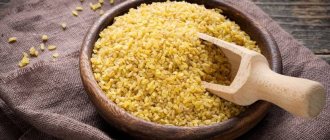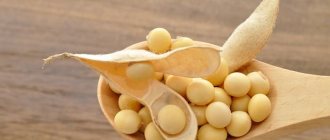What are the benefits of salad?
In addition to its low calorie content, salad is also very healthy. It contains vitamins, microelements, amino acids, and fiber.
Vitamin A has a beneficial effect on the condition of the skin, overall well-being, improves vision and is an antioxidant that prevents the aging of the body and the formation of malignant tumors. Vitamin C, which is abundant in green salads, strengthens our immunity and increases the body's resistance to viruses and colds. B vitamins (niacin, nicotinamide, pyridoxine, folic and pantothenic acids, thiamine, riboflavin) help strengthen the nervous system, reduce stress and anxiety, and improve sleep.
They improve brain function, memory, attention, relieve stress, tone up, improve blood composition, participate in the metabolic process and improve it, promote the breakdown of fats and carbohydrates for energy, normalize the acid-base balance, have an antioxidant effect, preventing the occurrence of cancer and improving the condition of our skin, teeth, hair and nails. Vitamin E contained in the leaves is also a powerful antioxidant. Vitamin K plays an important role in the process of blood clotting.
It's not just the low calorie content and high vitamin content that makes the salad so healthy. It also contains very important microelements. Calcium, phosphorus and fluorine strengthen bones and teeth.
Potassium helps remove salts and excess water from the body and is necessary for the functioning of all muscles. Sodium normalizes water-salt metabolism. Magnesium and zinc are necessary for all metabolic processes in the body; in addition, magnesium, zinc and copper improve the condition of hair, nails and skin.
Iron is necessary for blood, and iodine is necessary for the proper functioning of the thyroid gland. Manganese regulates blood sugar levels, has an antioxidant effect and improves liver function. Selenium slows down the aging of the body and preserves youth, beauty and vigor of a person.
Lutein and zeaxanthin are extremely important for human vision, and like all polyphenols, they are also effective antioxidants. Lactucin calms the human nervous system, normalizes sleep, and also prevents salt deposition. Pectins improve intestinal function and help the body get rid of “bad” cholesterol.
[custom_ads_shortcode1]
Who is recommended to eat salad?
Due to the low calorie content of salad and its ability to improve metabolism and stimulate the breakdown of fats, it is recommended for consumption by those who are obese. The ability to regulate blood sugar levels makes this green very beneficial for diabetics. The leaf variety is useful for mental workers and those whose work involves heavy mental and nervous stress - it stabilizes the nervous system and stimulates brain function.
Green salad is recommended for consumption by women - it helps maintain youth and beauty, relieves unpleasant symptoms of PMS, and the iron it contains prevents anemia during menstruation. It effectively fights constipation. In medicine it is used to treat peptic ulcers of the stomach and duodenum, as well as in the treatment of chronic gastritis.
It improves appetite and promotes better digestion of food. Normalizes blood pressure, cleanses the blood, relieves headaches, is effective against vitamin deficiency and hypovitaminosis, and promotes tissue regeneration. It has an antimicrobial effect, improves immunity and helps the body fight various diseases, and also helps to quickly recover from illness.
Eating salad is recommended for those who want to normalize metabolism and improve blood circulation. For swelling, greens, due to their high potassium content and mild diuretic effect, remove excess fluid and salts from the body. And don’t forget that the low calorie content of salad allows it to effectively fight excess weight.
[custom_ads_shortcode2]
Calorie content
Leaf lettuce, which has very low calorie content - only 15 calories per 100 grams of green leaves - is an ideal dietary product. It is credited with its ability to lower blood sugar and counteract obesity. Due to the high content of ascorbic acid, green leaf lettuce is an excellent antioxidant and resists cell aging.
It is usually eaten fresh - mainly as part of vitamin salads, fresh snacks, and side dishes for various dishes.
Calorie content of salad and weight loss
The salad seems to have been created specifically to be added to the diet during various diets. The high content of vitamins and microelements plays an extremely important role in conditions of a limited diet, and the low calorie content allows you not to overeat and comply with daily calorie restrictions.
Salad in diets should be combined with carbohydrates and proteins - meat, poultry, fish, vegetables, nuts, cheeses. You can use it as the basis of vegetable salads, combining it with tomatoes, cucumbers, bell peppers, and olives. Such dishes are best seasoned with olive oil and lemon juice, and to enhance the fat-burning effect, you can add garlic, ginger or cinnamon.
You can also arrange fasting days on salad - the low calorie content will allow you to keep your daily calorie intake within 1000 kcal, without suffering from hunger. When fasting on salad, you need to eat at least 500-700 grams of this salad and 1 kg of any other green vegetables or tomatoes. Vegetable salads can be seasoned with a spoon of olive oil and lemon juice.
During the day you need to drink enough water or green tea - at least 1.5 liters. In one such fasting day, you can cleanse the intestines, remove excess fluid from the body, rid your body of toxins, and repeating such fasting days once a month will allow you to lose weight smoothly and steadily.
Lettuce is a one- or two-year-old garden crop of the Asteraceae
. Information that lettuce was eaten is found in documents describing the existence of the ancient Roman Empire; before that time, lettuce was grown for its seeds, from which oil was squeezed out. The exact geographical place of origin of the first types of lettuce has not been historically established.
Lettuce has many varieties, the most common, leaf lettuce, has long, tender shoots in the shape of oak leaves, light green (light green) color. Lettuce leaves are juicy, crunchy, with a fresh smell, and can vary in shape and quantity located on one root or head.
[custom_ads_shortcode3]
Composition and beneficial properties of salad
The salad has a rich vitamin and mineral composition, which contains: vitamins B, C, as well as potassium, calcium, sulfur, iodine, phosphorus. The product contains coarse dietary fiber, which helps improve digestion, normalizes intestinal motility, fills the volume of the stomach and, without being digested, is excreted, collecting mucus and waste from the intestinal walls. Substance lactucin
, which belongs to the group of alkaloids, not only gives the salad a bitter taste, but also actively reduces cholesterol levels in the blood. Eating lettuce leaves will help improve the condition of hair and nails, has a beneficial effect on the skin, improves memory, vision and is a preventive measure against the occurrence of Alzheimer's disease.
Despite the beneficial properties of lettuce, it can be harmful to the body.
[custom_ads_shortcode2]
leaf lettuce
Description
Leaf lettuce, or lettuce, is a herbaceous annual plant of the Asteraceae family. Refers to valuable vegetable crops. Lettuce leaves are large, smooth, crinkled, wrinkled or curly, and light green or burgundy in color. Used as food since ancient times. The taste is neutral. Currently, it is one of the most widespread vegetable crops in the world.
Cooking methods
Most often, fresh leaves are eaten. Lettuce is mainly used in various vegetable salads: it goes well with all vegetables and with other types of leaf and head salads. When cooking, lettuce leaves are doused with boiling water and torn by hand - this way more nutrients are retained in the salad.
Lettuce goes well with cheeses, adding freshness and firmness, as well as meat and poultry dishes. Lettuce quickly loses its appearance and some of its taste when added to hot food, so lettuce is used mainly in cold dishes. The exception is soups, to which even wilted leaves can be added. As a rule, lettuce is added to ready-made chicken broths; Most often, this soup is pureed to highlight the delicate taste and aroma of lettuce leaves.
Lettuce also has an important aesthetic value: its addition makes salads, sandwiches, canapés and appetizers served on lettuce leaves look more appetizing. They are used to create vegetable rolls. Blanched leaves are used to make cabbage rolls instead of cabbage. It is also a necessary ingredient when preparing some sauces.
Leaf lettuce is stored for no longer than 2-4 days and quickly loses its taste and nutritional qualities, so it is advisable to consume it on the day of preparation, and therefore lettuce cannot be frozen or similar harvesting methods.
Avoid storing lettuce in the refrigerator, since low temperatures significantly affect the content of nutrients in lettuce. To wash the lettuce, it is better to use hot, not running water.
Benefit
Regular consumption of lettuce can improve brain activity, normalize sleep and help get rid of insomnia and anxiety. Salad affects vision, relieving eye fatigue, helps strengthen the immune system, lowers cholesterol levels and speeds up metabolism in the body.
The chemical composition of lettuce has a beneficial effect on blood composition, so it can be useful for anemic conditions and for stabilizing blood pressure. Eating salad is extremely beneficial for digestion: regular consumption allows you to cleanse the intestines of toxins and waste.
It is also worth noting that lettuce affects the overall development and growth of the body, therefore it is useful for children and for strengthening nails and hair.
Harm
An excess of salad in the diet causes bloating.
Lettuce is not recommended:
- with exacerbation of colitis and enterocolitis;
- for gout;
- with hepatitis;
- with urolithiasis;
- for asthma and tuberculosis;
- children under 3 years old;
- people prone to allergic reactions.
It should also be used with caution by pregnant and breastfeeding women.
Composition and calorie content
Lettuce contains vitamins B, E, K, A, PP, C, as well as the following minerals: iron, manganese, selenium, copper, zinc.
The calorie content of lettuce is 15 kcal. per 100 g of product.
Salad for weight loss
The salad is a unique product for those watching their weight. By eating a large bowl of lettuce leaves, you get a full stomach and a minimum of calories (calorizator). Of course, salad in its pure form does not give a feeling of fullness, so it is combined with other vegetables or protein foods. You can, without adhering to special diets, consume a portion of lettuce leaves every day for lunch or dinner, thereby ensuring regular bowel movements, healthy peristalsis and burning of fat deposits. Babushkin’s diets or, for example, the French diet for 13 days, recommend the daily use of lettuce leaves in the diet.
[custom_ads_shortcode1]
Salad in cooking
The name of the product speaks for itself; lettuce is most often used in salads. Even if it is a mixture of different types of lettuce leaves and a simple dressing of any aromatic oil - olive, nut or any oil to taste - sea salt and freshly ground pepper, then this salad will be a very tasty and healthy dish (calorizer). Lettuce leaves go well with shrimp, mushrooms, nuts, eggs, dairy products, baked chicken breast or cold roast beef. The traditional use of elegant lettuce leaves is to serve and decorate cold appetizers, salads and various dishes; lettuce is a very “correct” side dish for meat dishes, promoting rapid digestion of meat.
For more information about leaf lettuce, watch the video “Leaf lettuce – benefits and harms” of the TV show “About the Most Important Thing.” Especially for Calorizator.ru Copying this article in whole or in part is prohibited.
The chemical composition of green salad is rich in pectin. This substance is one of the main natural medicines for the intestines. And it is also a serious obstacle to the path of cholesterol to the blood vessels. So, if there is a risk of developing atherosclerosis, you should pay especially close attention to the beneficial properties of leaf lettuce.
Next, what other benefits do lettuce leaves have? They help normalize many metabolic processes in the body due to the content of the B complex of vitamins: B1, B2 and B9. In addition, their benefit is that many salts of light metals - potassium, magnesium, calcium, which are part of the vegetable - also participate in the processes of mineral metabolism in the body and stabilize the condition of many organs.
[custom_ads_shortcode3]
Summer salad recipe. Calorie, chemical composition and nutritional value.
Nutritional value and chemical composition of “Summer Salad”.
The table shows the nutritional content (calories, proteins, fats, carbohydrates, vitamins and minerals) per 100 grams of edible portion.
| Nutrient | Quantity | Norm** | % of the norm in 100 g | % of the norm in 100 kcal | 100% normal |
| Calorie content | 33.3 kcal | 1684 kcal | 2% | 6% | 5057 g |
| Squirrels | 1.1 g | 76 g | 1.4% | 4.2% | 6909 g |
| Fats | 1.5 g | 56 g | 2.7% | 8.1% | 3733 g |
| Carbohydrates | 3.5 g | 219 g | 1.6% | 4.8% | 6257 g |
| Organic acids | 0.5 g | ~ | |||
| Alimentary fiber | 1.3 g | 20 g | 6.5% | 19.5% | 1538 g |
| Water | 91.5 g | 2273 g | 4% | 12% | 2484 g |
| Ash | 0.627 g | ~ | |||
| Vitamins | |||||
| Vitamin A, RE | 76.7 mcg | 900 mcg | 8.5% | 25.5% | 1173 g |
| Retinol | 0.01 mg | ~ | |||
| beta carotene | 0.401 mg | 5 mg | 8% | 24% | 1247 g |
| Vitamin B1, thiamine | 0.045 mg | 1.5 mg | 3% | 9% | 3333 g |
| Vitamin B2, riboflavin | 0.043 mg | 1.8 mg | 2.4% | 7.2% | 4186 g |
| Vitamin B4, choline | 9.11 mg | 500 mg | 1.8% | 5.4% | 5488 g |
| Vitamin B5, pantothenic | 0.251 mg | 5 mg | 5% | 15% | 1992 |
| Vitamin B6, pyridoxine | 0.075 mg | 2 mg | 3.8% | 11.4% | 2667 g |
| Vitamin B9, folates | 7.833 mcg | 400 mcg | 2% | 6% | 5107 g |
| Vitamin B12, cobalamin | 0.03 mcg | 3 mcg | 1% | 3% | 10000 g |
| Vitamin C, ascorbic acid | 16.35 mg | 90 mg | 18.2% | 54.7% | 550 g |
| Vitamin D, calciferol | 0.007 mcg | 10 mcg | 0.1% | 0.3% | 142857 g |
| Vitamin E, alpha tocopherol, TE | 0.407 mg | 15 mg | 2.7% | 8.1% | 3686 g |
| Vitamin H, biotin | 1.247 mcg | 50 mcg | 2.5% | 7.5% | 4010 g |
| Vitamin K, phylloquinone | 10.4 mcg | 120 mcg | 8.7% | 26.1% | 1154 g |
| Vitamin RR, NE | 0.52 mg | 20 mg | 2.6% | 7.8% | 3846 g |
| Niacin | 0.333 mg | ~ | |||
| Macronutrients | |||||
| Potassium, K | 210.67 mg | 2500 mg | 8.4% | 25.2% | 1187 g |
| Calcium, Ca | 23.53 mg | 1000 mg | 2.4% | 7.2% | 4250 g |
| Silicon, Si | 24.333 mg | 30 mg | 81.1% | 243.5% | 123 g |
| Magnesium, Mg | 16.4 mg | 400 mg | 4.1% | 12.3% | 2439 g |
| Sodium, Na | 7.2 mg | 1300 mg | 0.6% | 1.8% | 18056 g |
| Sera, S | 14.2 mg | 1000 mg | 1.4% | 4.2% | 7042 g |
| Phosphorus, P | 36.8 mg | 800 mg | 4.6% | 13.8% | 2174 g |
| Chlorine, Cl | 43.07 mg | 2300 mg | 1.9% | 5.7% | 5340 g |
| Microelements | |||||
| Aluminium, Al | 263 mcg | ~ | |||
| Bor, B | 67.6 mcg | ~ | |||
| Vanadium, V | 0.23 mcg | ~ | |||
| Iron, Fe | 0.727 mg | 18 mg | 4% | 12% | 2476 g |
| Yod, I | 2.93 mcg | 150 mcg | 2% | 6% | 5119 g |
| Cobalt, Co | 3.553 mcg | 10 mcg | 35.5% | 106.6% | 281 g |
| Lithium, Li | 13.533 mcg | ~ | |||
| Manganese, Mn | 0.1529 mg | 2 mg | 7.6% | 22.8% | 1308 g |
| Copper, Cu | 98.4 mcg | 1000 mcg | 9.8% | 29.4% | 1016 g |
| Molybdenum, Mo | 4 mcg | 70 mcg | 5.7% | 17.1% | 1750 g |
| Nickel, Ni | 6.271 mcg | ~ | |||
| Tin, Sn | 0.87 mcg | ~ | |||
| Rubidium, Rb | 103.1 mcg | ~ | |||
| Selenium, Se | 0.367 mcg | 55 mcg | 0.7% | 2.1% | 14986 g |
| Strontium, Sr | 1.13 mcg | ~ | |||
| Fluorine, F | 19.33 mcg | 4000 mcg | 0.5% | 1.5% | 20693 g |
| Chromium, Cr | 5 mcg | 50 mcg | 10% | 30% | 1000 g |
| Zinc, Zn | 0.2533 mg | 12 mg | 2.1% | 6.3% | 4737 g |
| Zirconium, Zr | 2.24 mcg | ~ | |||
| Digestible carbohydrates | |||||
| Starch and dextrins | 0.187 g | ~ | |||
| Mono- and disaccharides (sugars) | 3.4 g | max 100 g | |||
| Glucose (dextrose) | 1.353 g | ~ | |||
| Sucrose | 0.8 g | ~ | |||
| Fructose | 1.08 g | ~ | |||
| Essential amino acids | 0.168 g | ~ | |||
| Arginine* | 0.039 g | ~ | |||
| Valin | 0.024 g | ~ | |||
| Histidine* | 0.012 g | ~ | |||
| Isoleucine | 0.023 g | ~ | |||
| Leucine | 0.032 g | ~ | |||
| Lysine | 0.033 g | ~ | |||
| Methionine | 0.006 g | ~ | |||
| Methionine + Cysteine | 0.01 g | ~ | |||
| Threonine | 0.025 g | ~ | |||
| Tryptophan | 0.007 g | ~ | |||
| Phenylalanine | 0.021 g | ~ | |||
| Phenylalanine+Tyrosine | 0.044 g | ~ | |||
| Nonessential amino acids | 0.573 g | ~ | |||
| Alanin | 0.027 g | ~ | |||
| Aspartic acid | 0.09 g | ~ | |||
| Glycine | 0.023 g | ~ | |||
| Glutamic acid | 0.311 g | ~ | |||
| Proline | 0.018 g | ~ | |||
| Serin | 0.025 g | ~ | |||
| Tyrosine | 0.022 g | ~ | |||
| Cysteine | 0.006 g | ~ | |||
| Sterols (sterols) | |||||
| Cholesterol | 5.8 mg | max 300 mg | |||
| Saturated fatty acids | |||||
| Saturated fatty acids | 0.8 g | max 18.7 g | |||
| Monounsaturated fatty acids | 0.405 g | min 16.8 g | 2.4% | 7.2% | |
| Polyunsaturated fatty acids | 0.062 g | from 11.2 to 20.6 g | 0.6% | 1.8% | |
| Omega-6 fatty acids | 0.1 g | from 4.7 to 16.8 g | 2.1% | 6.3% |
The energy value of summer salad is 33.3 kcal.
Primary Source: Created in the application by the user. Read more.
** This table shows the average levels of vitamins and minerals for an adult. If you want to know the norms taking into account your gender, age and other factors, then use the “My Healthy Diet” application.
Medicinal properties of lettuce
1. For immunity.
An even more important healing property of lettuce is the presence in it of various antioxidants and vitamins that support the immune system. The most famous and effective of them are vitamin C and beta-carotene. These beneficial substances in salad strengthen the body's immune system by promoting the development and activity of guard cells in the blood.
2. From cholesterol. By the way, vitamin C in the body promotes the breakdown of cholesterol into individual bile acids, due to which the level of cholesterol in the blood decreases and the work of the liver is facilitated.
3. For cancer.
But vitamin C also has powerful antioxidant properties. In salad, it shares the responsibilities of protecting against free radicals and the risk of cancer with tocopherols, and together they create a barrier that is practically impenetrable to various negative environmental factors - harmful gases, toxins, radiation.
4. For cough.
Even in Ancient Greece, healers noted the beneficial properties of lettuce decoction to stop coughing and act as a good expectorant. Therefore, for various diseases of the upper respiratory tract, the benefit of this decoction is that it leads to relief of symptoms and a speedy recovery.
5. For anemia.
The benefit of microelements contained in salad is that they promote better hematopoiesis and ensure elasticity of the walls of blood vessels. It is not for nothing that lettuce leaves, whose beneficial properties are so valuable, are considered an important element of the diet for those who suffer from anemia and diseases of the blood vessels.
[custom_ads_shortcode1]
Lettuce in cosmetology
Well, we can’t help but mention the healing properties of lettuce for the skin. It can improve the condition of dry and flaky skin. Masks from the leaves or its infusion are recommended for treating the skin of the face, head and those areas where rashes regularly occur. A large amount of vitamins in lettuce leaves helps normalize metabolic processes in the upper layers of the skin and activate the functioning of the skin glands.
Therefore, we inherited numerous secrets of beauty and health from the ancient Greeks and Romans with salad. It is not without reason that leaf lettuce, whose benefits are so valued by lovers of a healthy lifestyle, appears in the spring as one of the first green vegetables on store shelves. And while we prepare various fresh dishes from it, traditional healers and doctors continue to discover new possibilities in it and invent new drugs based on it.
Iceberg lettuce is a vegetable crop related to head lettuce, has light green leaves wrapped in small, not very dense heads, juicy and crispy in taste. Iceberg lettuce has been grown since ancient Egypt, first for its oil and seeds, and only then for its edible, nutritious leaves.
Externally, Iceberg lettuce is very similar to white cabbage, therefore, when buying it in the supermarket in the self-service section, many often confuse them (calorizer). On average, the weight of one head of cabbage is 300-400 g. Iceberg tastes very similar to lettuce, only it has a pleasant crunch, which is completely unusual for the latter. Moreover, the higher the concentration of water in this leafy vegetable, the crispier it is.
[custom_ads_shortcode2]
Application
Fresh lettuce leaves are often used in Mediterranean cuisine. They are added to salads, sandwiches, and decorate dishes. It is recommended to chop the salad by hand, since the substances included in its composition react with the metal of the knife and an oxidation process occurs. Lettuce leaves are used to wrap the filling. Sometimes added to soups at the very end of cooking.
Market Analytics
- Global cosmetics market 2021: an unprecedented test for the global cosmetics industry
- Top 10 Cosmetic Research and Development of 2021
- 2020 in the beauty industry – innovation without borders
Convenient search for beauty salons on our website
Beauty salons in Moscow Beauty salons in St. Petersburg Beauty salons in Ekaterinburg Beauty salons in Novosibirsk
Latest blog posts on our website
- Naturecream / Properties of the “Sunny” oil itself
- Naturecream / “Sugar” wrinkles - or what glycation can do
- Naturecream / Esterified oils
- Naturecream / Arnica - the magical plant of alchemists
- Naturecream / Tremella Extract - Snow Mushroom Detox for Skin
- Prostye-sovety / How to visually enlarge your lips with makeup
- Naturecream / Apricot kernel oil for face
- Naturecream / MATRIXYL3000 - the best skin elasticity stimulator
- Naturecream / SPF in Natural Oils
- Naturecream / Geranium (Pelargonium) oil for skin health and beauty
Latest forum topics on our website
- Natalya / How to properly make a gelatin mask?
- Mrs._Smith / Badly sunburned! What to do?((
- Ice / Is it necessary to combine fitness classes with a diet?
- Antonova / What can be used for hair loss?
- Radio operatorKat / Who was on a protein diet?
Other articles in this section
| Dried white cabbage White cabbage has been grown for more than 2000 years. The ancient Greeks valued cabbage for its medicinal properties and nutritional value. There are more than one hundred varieties of cabbage. Dried cabbage retains all its nutritional properties and taste. |
| Oakleaf lettuce The Oakleaf lettuce variety (oak lettuce) was developed in France in the 17th century. Its leaves are very similar in shape to oak leaves, which is why the salad got its name. The leaves form a loose rosette. There are two varieties of oakleaf lettuce - green and red. The closest variety to it is butter lettuce. |
| Kale Cabbage Kale cabbage also belongs to the cruciferous family, but unlike other types of cabbage, it does not form heads. Its curly green leaves are more reminiscent of salad greens. In some varieties, the leaves are not curly, but smooth, and the color varies from green to purple. The ancestor of kale is considered to be wild kale, but the exact place of origin has not been established. |
| Fried white cabbage White cabbage has been a cultivated plant since prehistoric times. It was brought to Europe by the Celts in 600 AD. e. The ancient Greeks and Romans knew about the healing properties of cabbage and believed that it could cure many diseases. White cabbage is descended from wild kale. Its light green leaves form a tight round head, the average diameter of which is 30-40 cm. |
| Cucumber Cucumber is a member of the Cucurbitaceae family, like melon, watermelon and squash. It has a cylindrical shape with a length of 20-30 cm. It is covered with a crispy dark green peel, under which the juicy pulp is hidden. Initially, the cucumber grew in the tropics; it is believed that its homeland is in India. Gradually, this vegetable crop spread throughout the world. |
| Cilantro Coriander is one of the most common herbs in the world. Both the greens of the plant and the seeds are used in cooking. In the East, the more common name for green coriander is cilantro; this is one of the most popular seasonings in Caucasian cuisine, as well as in Thai and Vietnamese cuisine. Cilantro is native to Asia and the Mediterranean region. In Western countries it is even called "Chinese parsley". |
| Savoy cabbage Savoy cabbage is more similar to white cabbage, only the leaves of white cabbage have a smooth surface, while Savoy cabbage has a corrugated surface. Savoy cabbage has a more delicate taste and aroma; the leaves do not have thick, coarse veins, like white cabbage. Like other cruciferous vegetables, it contains many nutrients, especially glucosinolates. The name of this type of cabbage comes from the Italian county of Savoy, where it was first grown. |
| Parsley Parsley belongs to the plants of the Umbelliferae family and is a relative of carrots, celery, dill, fennel, parsnips and other vegetable crops. There are two main types of parsley - common leaf (or Italian) and curly. Common parsley has smooth, dark green leaves and is more aromatic. Curly parsley has intricately indented leaf edges. |
| Asparagus In ancient times, asparagus was used as an aphrodisiac. In addition to this property, asparagus contains a whole range of nutrients that make it extremely healthy. This vegetable crop began to be grown in Ancient Greece 2500 years ago. It belongs to the lily family, which also includes onions and garlic. This is a perennial plant, and with proper care, asparagus can produce shoots in one place without replanting for 15 years. |
| Arracacha Arracacha is a root vegetable of the Umbelliferae family from Latin America, related to carrots and celery. Most common in Brazil, Colombia, Ecuador and Venezuela. The harvest season lasts from January to September. Unlike potatoes, which were brought to Europe from Latin America, arracacha is a very rare vegetable for mid-latitudes. Fruits develop only under certain temperature conditions; root ripening lasts several months. It is very difficult to grow this crop in a continental climate. In Venezuela this vegetable is called “Creole celery”, and in Ecuador it is called “white carrot”. In Brazil, arracacha is grown on an industrial scale. There are several varieties of root vegetables - yellow, orange and white. |
Useful properties of Iceberg lettuce
Iceberg lettuce helps regulate metabolism in the body, improving intestinal motility, and improving blood composition. Thanks to its high folic acid content, Iceberg lettuce helps strengthen the nervous system and helps with stress and emotional disorders. It is recommended to eat Iceberg lettuce during difficult periods of exam sessions and during active mental activity.
During pregnancy, in order to provide the baby with all the necessary vitamins and microelements, expectant mothers include greens and salads in their diet, and Iceberg, which is available all year round, is a favorite. Since the harm of Iceberg lettuce is minimal, it is recommended to use it as often as you want.
[custom_ads_shortcode2]
Iceberg lettuce in cooking
Iceberg lettuce is usually consumed fresh, because during heat treatment it loses most of its beneficial properties. Having a fairly neutral taste, Iceberg will be a worthy “companion” for many products (calorizator). It is used to prepare salads and to decorate appetizers and dishes.
Due to the fact that the leaves of this salad are quite dense and crispy, in cooking they are often used as mini-plates for serving salads and cold appetizers. Iceberg lettuce can be stored in the refrigerator for a long time, because it is the only type of lettuce that is not at all afraid of the cold.
Sources:
- vesvnorme.net
- www.calorizator.ru
- sostavproduktov.ru
- www.calorizator.ru
How many calories are in salad
Lettuce comes in several varieties, including lettuce, watercress, iceberg lettuce, arugula and many others.
The low calorie content of salad with its very high nutritional value makes it an excellent dietary product. Like all green leafy vegetables, it is very healthy, containing many beneficial vitamins, minerals and amino acids and a lot of fiber. The calorie content of salad, like all green vegetables, is very low - it is not for nothing that it is included in the list of so-called “negative calorie foods”. It contains so few calories and so much fiber that it takes the body more energy to digest it than it takes in. Calorie content of fresh leaf lettuce (lettuce) is 12 kcal per 100 g. This amount contains only 0.3 g of fat, protein content - 1.2 g, carbohydrates - 1.3 g. The main source of calories is carbohydrates and sugars.
The calorie content of fresh Iceberg lettuce is 14 kcal per 100 grams of product. Calorie content of arugula – 25 kcal per 100 g. It contains more proteins and carbohydrates and has a pleasant sour taste.
The healthiest green salad is watercress. The calorie content of this variety is 11 kcal per 100 g. It has a spicy, piquant taste due to the content of pungent substances.
The salad is not filling on its own, but is a great addition to other vegetables and foods. Low calorie content makes it an excellent option for the summer menu or fasting days. It can be used as an ingredient for other salads and side dishes, and as a decoration or a kind of substrate for other dishes - meat or fish, for example.











